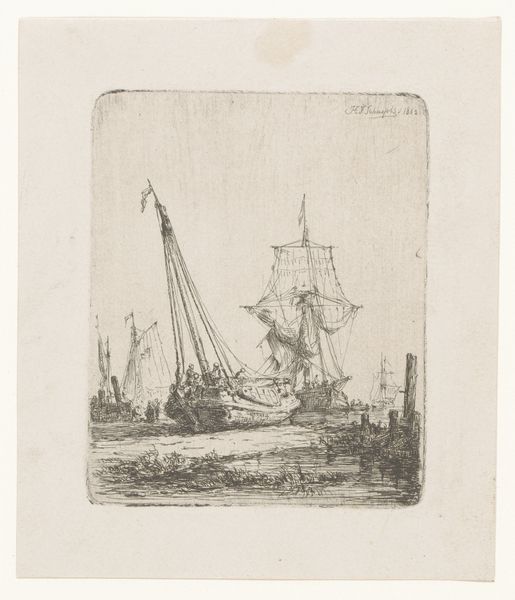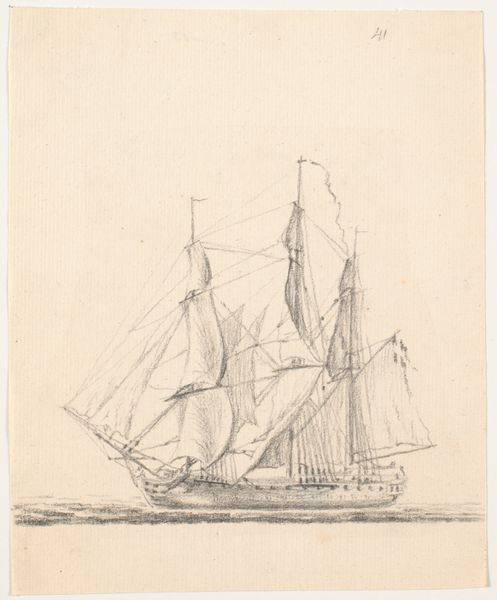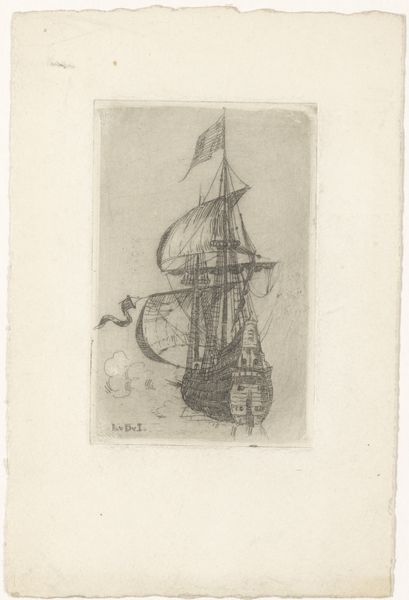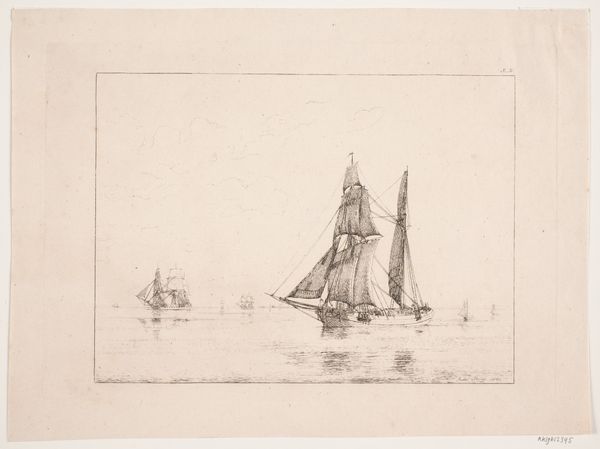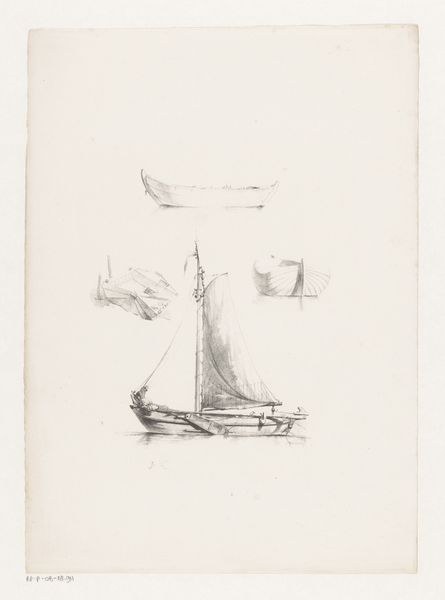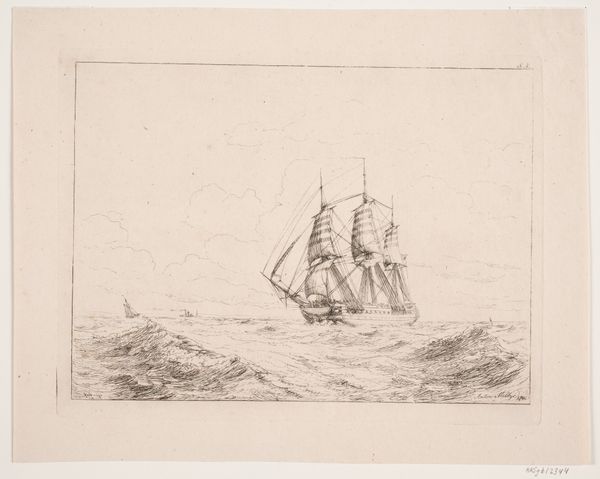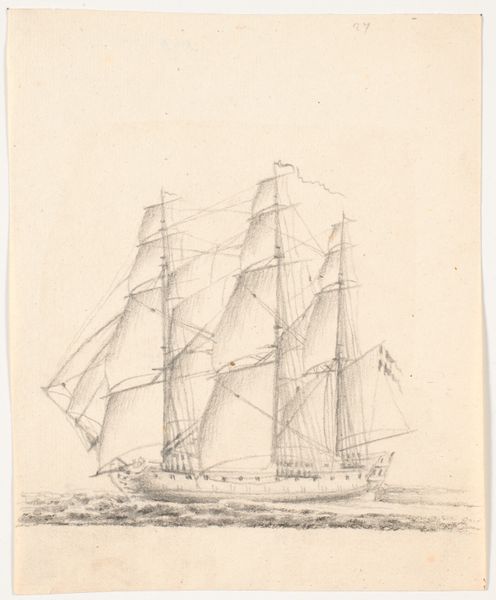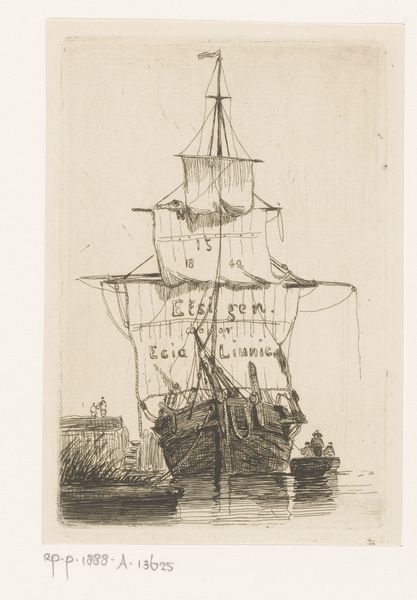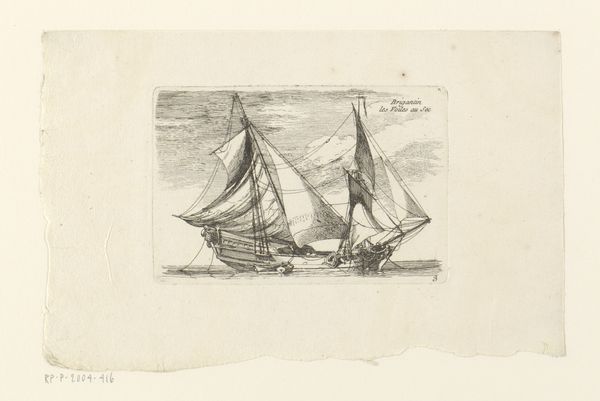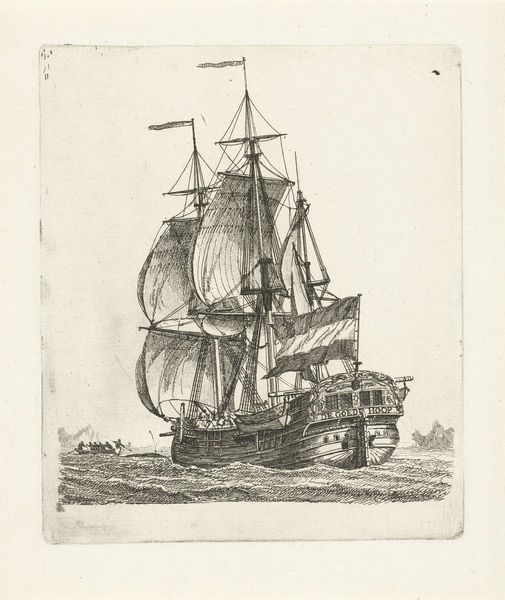
Dimensions: 190 mm (height) x 156 mm (width) (bladmaal)
Editor: Here we have C.A. Lorentzen's pencil drawing, "Marineskib for fulde sejl," dating from around 1746 to 1828, held at the Statens Museum for Kunst. The way the artist rendered the ship almost seems to dissolve into the vast openness surrounding it, which strikes me as quite evocative. What aspects of the artwork stand out to you? Curator: The beauty of this piece, rendered in delicate pencil lines, lies precisely in that dissolution you noted. Observe the interplay of light and shadow, how the artist uses subtle gradations to suggest form. The line becomes almost calligraphic, delineating not just the object but also the very atmosphere surrounding it. The sea, similarly, is conveyed through a flurry of short, energetic strokes that suggest movement. Editor: The texture, even just rendered in pencil, really gives a sense of dynamism. Curator: Indeed. Note how the diagonal thrust of the ship contrasts with the relatively calm horizontal lines of the water. The composition creates a tension, a visual pull between the static and the active. Are you familiar with the Rule of Thirds? Editor: Yes, very basically. Curator: Consider then how Lorentzen positions the ship. Does the mast align to those implied compositional lines? How does this placement impact the overall reading of the image? The success of the drawing relies solely on these strategic elements and juxtapositions. Editor: This perspective really shifts my perception from just seeing the ship to appreciating the technique behind illustrating such a dynamic image in pencil. Curator: Precisely. Without such understanding, we may overlook the artist's calculated rendering of light, shadow, and, indeed, dynamism.
Comments
No comments
Be the first to comment and join the conversation on the ultimate creative platform.
